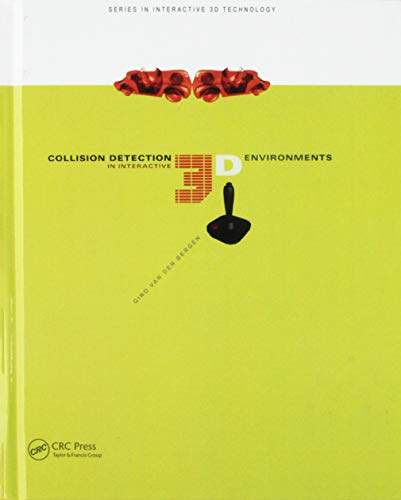The heart of any system that simulates the physical interaction between objects is collision detection-the ability to detect when two objects have come into contact. This system is also one of the most difficult aspects of a physical simulation to implement correctly, and invariably it is the main consumer of CPU cycles. Practitioners, new to the field or otherwise, quickly discover that the attempt to build a fast, accurate, and robust collision detection system takes them down a long path fraught with perils and pitfalls unlike most they have ever encountered. Without in-depth knowledge and understanding of the issues associated with engineering a collision detection system, the end of that path is an abyss that has swallowed many a good programmer! Gino van den Bergen?s new book is the story of his successful journey down that path. The outcome is his well-known collision detection system, the SOftware Library for Interference Detection (SOLID). Along the way, he covers the topics of vector algebra and geometry, the various geometric primitives of interest in a collision system, the powerful method of separating axes for the purposes of intersection testing, and the equally powerful Gilbert-Johnson-Keerthi (GJK) algorithm for computing the distance between convex objects. But this book provides much more than a good compendium of the ideas that go into building a collision system. The curse of practical computational geometry is floating-point arithmetic. Algorithms with straightforward implementations when using exact arithmetic can have catastrophic failures in a floating-point system. Specifically, intersection and distance algorithms implemented in a floating-point system tend to fail exactly in the most important case in a collision system-when two objects are just touching. Great care must be taken to properly handle floating-point round off errors. Gino?s ultimate accomplishment in this book is his presentation on how to correctly implement the GJK distance algorithm in the presence of single-precision floating-point arithmetic. And what better way to illustrate this than with a case study, the final chapter on the design and implementation of SOLID. About the CD-ROM The companion CD-ROM includes the full C++ source code of SOLID 3.5 as well as API documentation in HTML and PDF formats. Both single (32bit) and double (64bit) precision versions of the SOLID SDK plus example programs can be compiled for Linux platforms using GNU g++ version 2.95 to 3.3 and for Win32 platforms using Microsoft Visual C++ version 6.0 to 7.1. Use of the SOLID source code is governed by the terms of either the GNU GPL or the Trolltech QPL (see CD-ROM documentation for details). About the Author Gino van den Bergen is a game developer living and working in The Netherlands. He is the creator of SOLID and holds a Ph.D. in computing science from Eindhoven University of Technology. Gino implemented collision detection and physics in NaN Technologies? Blender, a creation suite for interactive 3D content.
Collision Detection in Interactive 3D Environments Ebook
By: Gino van den Bergen
Publisher:
routledge
Print ISBN: 9781558608016, 155860801X
eText ISBN: 9781482297997, 148229799X
Edition: 1st
Copyright year: 2003
Format: PDF
Available from $ 23.18 USD
SKU: 9781482297997R90
? Downloaded copy on your device does not expire..
?











